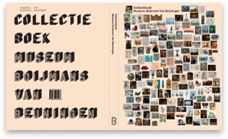This 16th century Spanish eating bowl was dipped halfway in green glaze. The fact that this sort of dishware from Spain was also found in the Low Countries shows that this sort of pottery was popular as trading goods in that period. There were regular trading contacts between Flanders, Holland, the Rhine land and the region of the Iberian Peninsula. In mediaeval Bruges, the centre of this trade, lived a large community of Spanish merchants. The Spanish trade with the Dutch regions stopped with the closing off of the Schelde at the end of the 16th century.

Specifications
| Title | bowl |
|---|---|
| Material and technique | Earthenware |
| Object type |
Bowl
> Tableware
> Kitchen and household
> Utensil
|
| Location | This object is in storage |
| Dimensions |
Height 10,6 cm Width 18,5 cm Depth 12,8 cm |
|---|---|
| Artists |
Potter:
Anoniem
|
| Accession number | F 9778 (KN&V) |
| Credits | Purchased 2007 |
| Department | Applied Arts & Design |
| Acquisition date | 2007 |
| Creation date | in 1525 - 1575 |
| Research |
Show research Alma |
| Material | |
| Object | |
| Geographical origin | Spain > Southern Europe > Europe |
| Archeological Find | Enkhuizen > North Holland > The Netherlands > Western Europe > Europe |
























